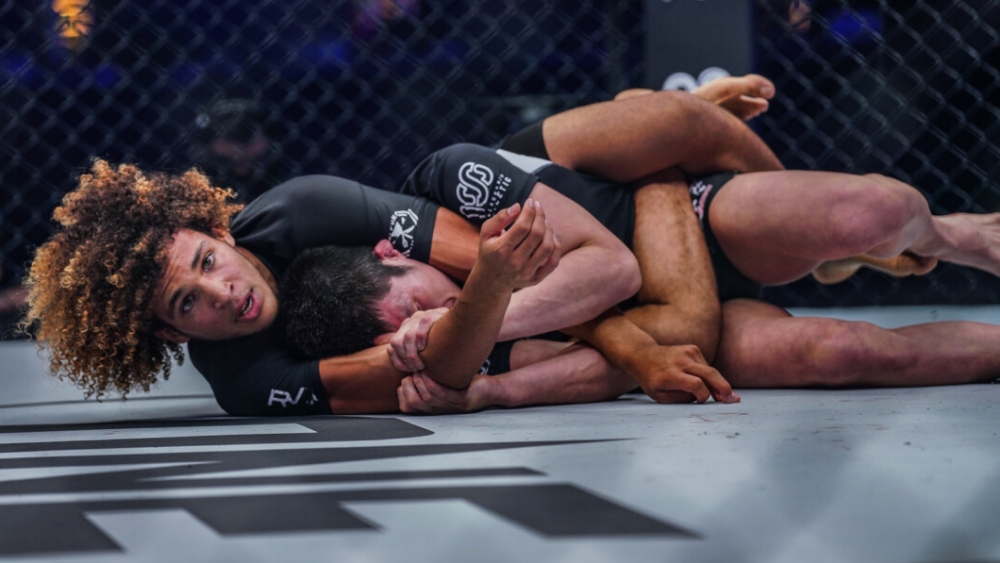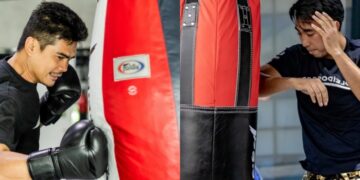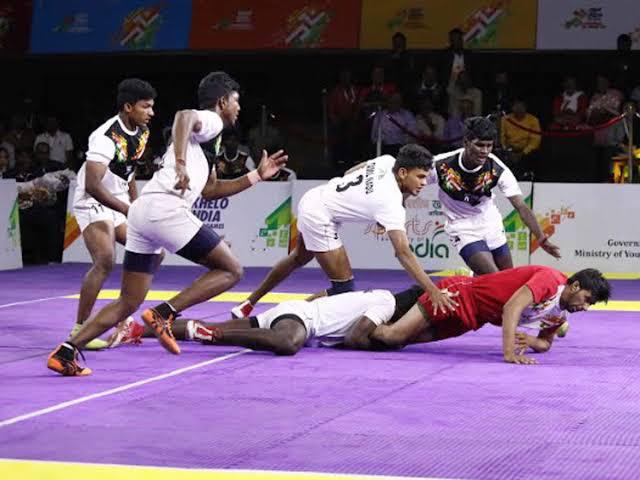
The back mount is highly regarded as the most dominant position in BJJ. Getting there is already a challenge, and maintaining it is another. There are various ways to control the back mount, such as maintaining chest-to-back connection, having one or two hooks, or using a body triangle, which has become common nowadays. In this article, we’ll discuss how to secure a stronger body triangle in Brazilian Jiu-Jitsu.
Ways To Secure A Stronger Body Triangle
When used efficiently, the body triangle is one of the best ways to control your opponents. While it usually favors lanky grapplers, anyone can work through the body triangle with proper setup. Below are some ways to keep a strong body triangle.
1) Constrict The Opponent’s Diaphragm
When controlling the opponent with a body triangle, it is critical to understand your objective with the triangle. Typically, grapplers have an excellent triangle and hold the opponent in place, but at the same time, many do not apply any pressure with the triangle that will open up the opponent for a choke or make them tap from the body triangle pressure. Grapplers usually have their body triangles go over the opponent’s hips.
While this is great for control, you want to constrict the opponent’s diaphragm, which sits just below their ribcage. This constricts the opponent’s ability to move their diaphragm and, in turn, makes it difficult to breathe, like a snake preying on its victim. To do this, fall to your over-hooking side, positioning your head above the opponent’s.
For example, if you land on your left side and put your right foot on the opponent’s hip. Using your right hand, pick up your left shin. What practitioners often do wrong is lock the triangle on their ankle right above the opponent’s hip bone. This is great for control as it gives you the space to fight and work on the choke. If you want to apply pressure that can make the opponent tap while at the same time opening them up for a choke, aim to constrict their diaphragm, as this gives you both control and access to the choke.
Before picking up your left shin, remember that as you fall to the left side, keep your left knee higher, as this will position it across the opponent’s diaphragm and not low across their hip. As you pull your left shin up, push down the opponent’s hip with your right foot. Lock in your body triangle on your shin, not your ankle, at the crook of the knee. Squeeze as your knees go in and flare your heel. This puts pressure like in a regular triangle where you initially drop your top leg, flare both your knees, and squeeze them together.
Using this setup, you can get into a complete triangle even if you’re less flexible or are against a bigger grappler. However, remember to make the most of the scenario and work from there, as having the perfect setup is not always possible.
2) Keep The Top Side Triangle
Aim to keep the top side triangle and practice switching your triangles. When the opponent forces their body down the opposite side, transition your triangle lock to the top side. You want to avoid having your top leg (locking leg) on the mat. If your triangle top leg is put on the floor, it is similar to when you cross your feet from the back mount — making you susceptible to a leg lock.
This is because the opponent can step over your top leg (which is on the mat) and slowly put their hips through for a leg lock. Also, the opponent can push your knee (the one across their body) down, which can turn into a heel hook-like effect. You must switch your triangle control and grab your shin if needed while transitioning.
3) Belly Down Body Triangle
The belly-down body triangle is likely the most powerful way you can apply the body triangle. It is most effective when you’re on top while behind the opponent because when you’re on top, you can apply all your pressure downwards using gravity on your side. While constricting the opponent’s diaphragm with the body triangle is all about squeeze, we should focus on the squeeze plus using gravity when in the belly-down body triangle. Watch the video and observe how ONE Lightweight Submission Grappling World Champion Kade Ruotolo effectively executes the belly-down body triangle.
An excellent way to achieve this is by using the closed guard. Use the two-on-one control and drag the opponent’s arm across as you reach for their far lat from behind to come on top. Often, if you execute this back take, the opponent will have a strong base, making it difficult to pull them as you grab their far lat. When you can’t pull them to you, go up instead and lock the body triangle. Having the body triangle locked while the opponent is turtled, grab both their wrists from below, flatten them to the mat, and spread them. As you lock the triangle, remember to curl your feet in order to keep everything tight.
Depending on how the opponent reacts, you can sometimes grab the opponent’s wrists while your other hand posts on the mat as you drive your hips down in a sprawl position to flatten them to the mat while keeping your head up.
From here, you can perform the same approach of squeezing the opponent’s diaphragm until they tap or go for a choke. In the event that the opponent doesn’t tap, they will most likely leave their neck open. Apply the same pressure as you would in a triangle choke to slowly sap away the opponent’s will to fight.
Conclusion
The body triangle effectively keeps your opponents grounded while leaving their necks susceptible to chokes. While it may seem like this technique favors lanky grapplers, it is a move that can help anyone who studies its intricacies. Practice the transitions and entries to the body triangle, and you’ll soon become a menace on the mats.
You may also like:
Using The Grapevine To Build A Crushing Mount Game In BJJ & MMA
The toe hold is one of the most popular leg attacks in Brazilian Jiu-Jitsu. It is a move that is typically seen in colored belt matches and is an unexpected technique that can end a…
You’ve seen it on television, featured in mixed martial arts events, or completely on its own. Brazilian Jiu-Jitsu (BJJ) is one of the most popular sports on the planet, and subsequently, one of the most…
Mental health issues have become more prevalent in the past few decades, and they often have multiple consequences on the lives of the afflicted. These disorders can significantly impact a person’s ability to be an…
In grappling sports like Brazilian Jiu-Jitsu, wrestling, and MMA, mastering various takedowns can provide a significant advantage. One fundamental aspect of establishing control in these sports is securing an underhook. An underhook is a controlling…
Setting up traps is one of the most secure ways to secure a finish in Brazilian Jiu-Jitsu or any grappling sports. Nothing screams checkmate more than having your opponents step right into it as you…
In the world of Brazilian Jiu-Jitsu and Mixed Martial Arts, positional dominance is one of the most critical skills to master. The mount position is one of the most sought-after positions in the world of…
In boxing, the brawler boxing style is often used to refer to boxers with a limited understanding of the fundamentals of the sweet science. It is an aggressive fighting style that prioritizes attacking over defending…
“The Iron Man,” Rodtang Jitmuangnon, is a man who hardly needs an introduction to anyone who is serious about the sport of Muay Thai. The former Omnoi Stadium Champion and 250-fight veteran has remained at…
Leg day is often the most challenging but rewarding part of most people’s workout schedules. Your legs contain the largest muscles in your body, and getting those muscles toned and strong improves overall strength while…
The liver shot is one of those punches that personifies everything boxing represents. It’s a precision attack that targets the liver, the largest and most impact-vulnerable organ in the body. Successfully landing a liver shot…
Early last month the IFMA President, Sakchye Tapsuwan, made waves across the global Muay Thai community when he announced that the art of eight limbs will be granted the opportunity to be showcased as a…
Nutrient timing is a science field that strategically schedules when and what to eat during various periods throughout the day to optimize athletic performance when working out, speed up recovery, and optimize general health. Nutrition…




































